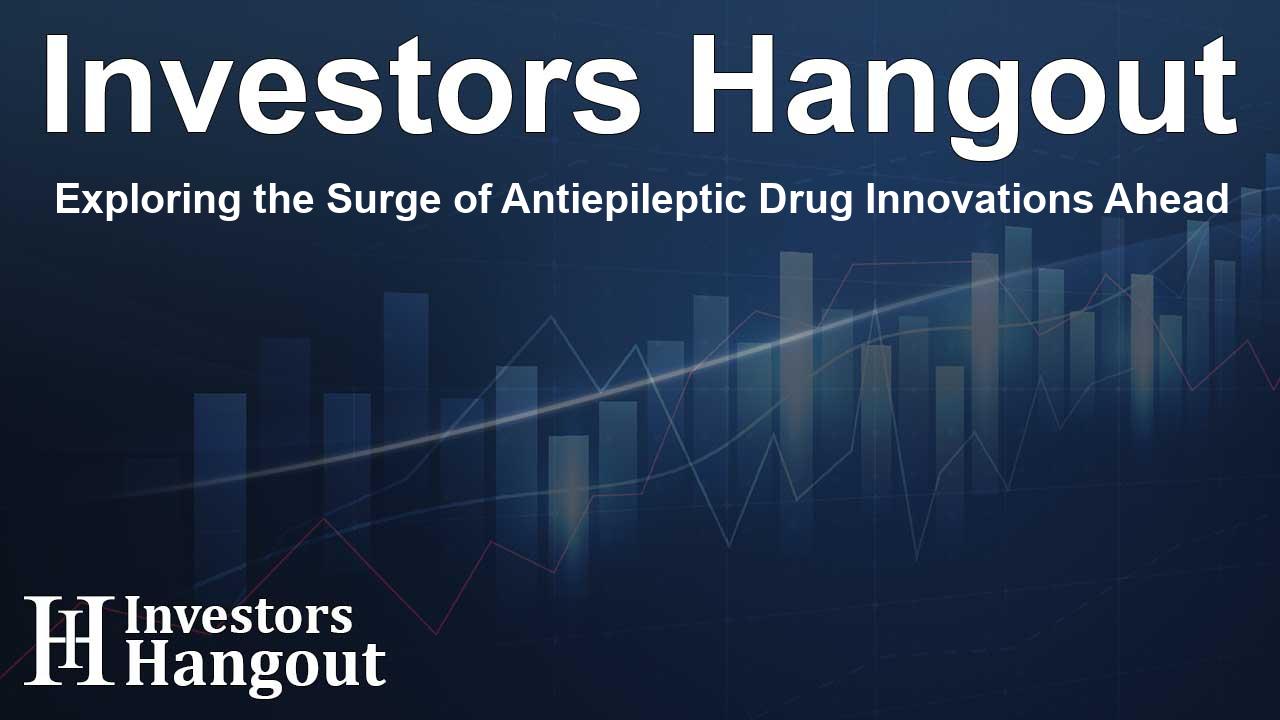Exploring the Surge of Antiepileptic Drug Innovations Ahead

Antiepileptic Drug Market on the Rise
The global antiepileptic drug market is experiencing remarkable growth, with forecasts indicating an increase from USD 18.85 billion to USD 28.72 billion over the next decade. This translates to a steady compound annual growth rate (CAGR) of 4.3%. As awareness surrounding epilepsy and the urgent need for effective treatments rise, this trend reflects the market's potential in the years ahead.
Understanding Epilepsy and Treatment Challenges
Epilepsy is a neurological disorder that affects a staggering 70 million people globally. Characterized by recurrent seizures, epilepsy can greatly diminish the overall quality of life for those afflicted. Although two-thirds of individuals find their symptoms manageable through existing antiepileptic drug therapies, a concerning 30% fall into the 'drug-resistant' category. For these patients, even advanced medications may not provide relief, highlighting a critical need for innovative treatment options.
Innovative Approaches in Antiepileptic Drug Development
To address the challenges faced by drug-resistant patients, there is a concerted effort in research and development focused on novel pharmacological solutions. Both pharmacological and non-pharmacological treatment options need exploration to create comprehensive management strategies for this condition.
Opportunities and Challenges in the Antiepileptic Drug Market
As the antiepileptic drugs (AED) market thrives, it presents several opportunities coupled with unique challenges. The International League Against Epilepsy (ILAE) defines drug-resistant patients as those who do not respond to a combination of two carefully selected antiepileptic medications. The implications for pharmaceutical companies are significant; the need for effective treatments that can cater specifically to these patients is immense.
Clinical Research and Development
A growing clinical pipeline, particularly for pediatric and geriatric populations, is driving forward the expansion of the AED market. Continuous research into novel therapies tailored for individuals with special needs, such as children and older adults, is increasingly important. These demographics often face unique challenges in managing their conditions, emphasizing the urgency for targeted and effective medications.
Market Trends and Future Directions
The demand for safer and more effective treatments is propelling pharmaceutical companies into overdrive, urging them to innovate and enhance their research efforts. The drive toward creating therapies that minimize cognitive side effects and other complications while improving overall efficacy is at the forefront of this market's evolution. Efforts to meet the specific needs of diverse patient groups will be vital in shaping the future of epilepsy care.
Key Market Insights
Various countries exhibit differentiated growth rates within the global antiepileptic drug market. For instance, analysts predict that the UK will experience a CAGR of 5.9% through 2034, Germany is expected to display a growth of 4.1%, and China is poised for rapid market development with a projected CAGR of 5.3% during the same period. The US market also remains strong with an anticipated CAGR of 4.7% from 2024 to 2034.
Navigating Through Market Challenges
As the AED market continues to grow, it encounters several challenges that require strategic attention. Physicians and patients must navigate complex drug interactions and potential cognitive side effects stemming from various antiepileptic medications. These complications urge a shift towards optimized drug design and improved safety profiles, ultimately aiming to enhance patient outcomes.
Competitive Landscape and Recent Developments
The antiepileptic drug market is vibrant, made up of numerous competitive players who are engaged in extensive collaborations and strategic initiatives to enhance their market presence. Recent advancements, such as the approval of innovative medications and partnerships to explore treatment effectiveness, signify a proactive approach from industry leaders to better serve patients.
Frequently Asked Questions
What is the projected growth of the antiepileptic drug market?
The global antiepileptic drug market is expected to grow from USD 18.85 billion to USD 28.72 billion by 2034, indicating a 4.3% CAGR.
What challenges do pharmaceutical companies face in this market?
Pharmaceutical companies must address the high incidence of drug-resistant patients and manage cognitive side effects associated with current AEDs.
Who are the major players in the antiepileptic drug industry?
Major companies include Merck KGaA, Eisai Co., Ltd., and Pfizer Inc., among others, competing for market share.
How do novel therapies contribute to epilepsy management?
Novel therapies aim to improve efficacy and reduce side effects, particularly for vulnerable populations such as children and the elderly.
What regions are expected to see significant growth in the AED market?
Regions like the UK, Germany, China, and the US are expected to experience notable growth in the antiepileptic drug market within the coming decade.
About The Author
Contact Olivia Taylor privately here. Or send an email with ATTN: Olivia Taylor as the subject to contact@investorshangout.com.
About Investors Hangout
Investors Hangout is a leading online stock forum for financial discussion and learning, offering a wide range of free tools and resources. It draws in traders of all levels, who exchange market knowledge, investigate trading tactics, and keep an eye on industry developments in real time. Featuring financial articles, stock message boards, quotes, charts, company profiles, and live news updates. Through cooperative learning and a wealth of informational resources, it helps users from novices creating their first portfolios to experts honing their techniques. Join Investors Hangout today: https://investorshangout.com/
The content of this article is based on factual, publicly available information and does not represent legal, financial, or investment advice. Investors Hangout does not offer financial advice, and the author is not a licensed financial advisor. Consult a qualified advisor before making any financial or investment decisions based on this article. This article should not be considered advice to purchase, sell, or hold any securities or other investments. If any of the material provided here is inaccurate, please contact us for corrections.
